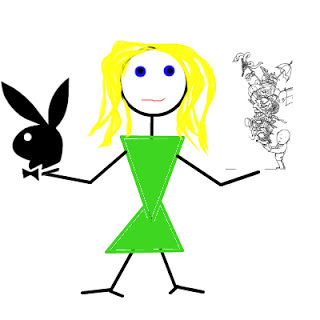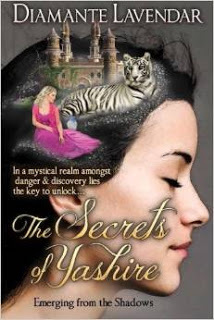Jade Varden's Blog, page 6
September 24, 2015
Writing 101 Redux: Writing with Bad Habits
You may be guilty of bad writing habits and not even know it...so how can you fix it?

Read today's Throwback Thursday Writing 101 tip, and see if you've been writing with bad habits.

Read today's Throwback Thursday Writing 101 tip, and see if you've been writing with bad habits.
Published on September 24, 2015 05:30
September 23, 2015
Writing 101: Trusting Yourself
I've been using the same beta reader for awhile now, but lately my reader hasn't been available for my newest book. I stopped freaking out about that around the same time I learned a valuable lesson about writing. Beta readers and reviewers are great, but as an author you should always be trusting yourself...and so should I.

The Issue of Trust
It's good to have beta readers, to get a second opinion, to check your work against someone else so you know you're on the right track. But you can't always rely on these things. The actor writing a novel is always a risk. It's a leap. You're putting something out there that's personal to you, and the world may rip it to shreds. You'll get a little less bloody if a beta reader rips into you first. But you don't always get that option. That's why you always have to make sure you're trusting yourself...and your book.
You should be critical of your own work, give it a careful edit and pay attention to the details. But at some point, you have to stop polishing and worrying -- and start trusting yourself. You don’t always have to wait for approval from a beta reader or an early reviewer. Sometimes, it may not be possible to get that stuff.
So find a way to trust yourself and your book, because you have to trust yourself to write it. If you aren’t trusting yourself, you aren’t presenting your best storytelling. So however you have to learn it, no matter which part of the process that tests you, learn to trust in you. Your writing will be better for it.

The Issue of Trust
It's good to have beta readers, to get a second opinion, to check your work against someone else so you know you're on the right track. But you can't always rely on these things. The actor writing a novel is always a risk. It's a leap. You're putting something out there that's personal to you, and the world may rip it to shreds. You'll get a little less bloody if a beta reader rips into you first. But you don't always get that option. That's why you always have to make sure you're trusting yourself...and your book.
You should be critical of your own work, give it a careful edit and pay attention to the details. But at some point, you have to stop polishing and worrying -- and start trusting yourself. You don’t always have to wait for approval from a beta reader or an early reviewer. Sometimes, it may not be possible to get that stuff.
So find a way to trust yourself and your book, because you have to trust yourself to write it. If you aren’t trusting yourself, you aren’t presenting your best storytelling. So however you have to learn it, no matter which part of the process that tests you, learn to trust in you. Your writing will be better for it.
Published on September 23, 2015 05:30
September 22, 2015
Writing 101: Always Be a Critic
I haven’t made a lot of time for reading lately, something people are always surprised to find out about me when they also know that I’m a writer. But no matter how much I don’t read, I’m exposed to storytelling every single day -- both good and bad. And I’m a huge critic of all the stories I come into contact with. This is a post about why you should be like me, too.

Picking it Apart
Storytelling is everywhere, from movies to TV shows to songs to commercials. You’ll see short stories, long stories, dramatic stories -- every kind of story is available at all times, and you can probably get to it from your cell phone. And when you encounter any story, you should be criticizing it. This will help you to become a better storyteller. Seriously, it will. I’m not saying that because I like being judgmental.
Me being judgmental is beside the point. The point is, be critical of all the stories you encounter. Your favorite TV show, for example. What do you like about it? What don’t you like about it? Are the characters relatable, does the dialogue ring true, do you enjoy the dramatic twists or the tongue-in-cheek humor? Notice what you like and don’t like about the stories that draw you in, no matter what kind of stories they are or how they get told to you.
You should be noticing what works and what doesn’t. If you can figure out how the story ends before it ends, that’s not really working. Be a critic with every story, and you’ll begin to learn much more about how to tell stories in a better way. Always be a critic when it comes to every story so you can keep polishing up your own stories. And you’ll want them polished...because I’ll be out there somewhere, critiquing you, too.

Picking it Apart
Storytelling is everywhere, from movies to TV shows to songs to commercials. You’ll see short stories, long stories, dramatic stories -- every kind of story is available at all times, and you can probably get to it from your cell phone. And when you encounter any story, you should be criticizing it. This will help you to become a better storyteller. Seriously, it will. I’m not saying that because I like being judgmental.
Me being judgmental is beside the point. The point is, be critical of all the stories you encounter. Your favorite TV show, for example. What do you like about it? What don’t you like about it? Are the characters relatable, does the dialogue ring true, do you enjoy the dramatic twists or the tongue-in-cheek humor? Notice what you like and don’t like about the stories that draw you in, no matter what kind of stories they are or how they get told to you.
You should be noticing what works and what doesn’t. If you can figure out how the story ends before it ends, that’s not really working. Be a critic with every story, and you’ll begin to learn much more about how to tell stories in a better way. Always be a critic when it comes to every story so you can keep polishing up your own stories. And you’ll want them polished...because I’ll be out there somewhere, critiquing you, too.
Published on September 22, 2015 05:30
September 21, 2015
It’s Okay to Be Unfaithful...to Your Genre
Some authors become so famous for writing books in a certain genre, they get stuck in it. You’ll always think of Stephen King as a horror author, and we all know that Agatha Christie was the Queen of mystery. But it’s okay to be unfaithful to your genre. Shel Silverstein, one of the most famous kids’ authors of all time, was completely unfaithful -- wickedly so.

At some point, someone probably read to you from Shel Silverstein's "The Giving Tree," one of the most well-known children's stories of all time. His poems and drawings have delighted generations of children. But Shel Silverstein had another job you probably didn't know about: Playboy.
He drew cartoons for the notorious gentleman's magazine, but these images weren't at all fit for kids. His cartoons included a lot of text, which itself was full of innuendo, and drawings of naked people.
This wasn't a brief, just-starting-out type of gig with Playboy, either. Silverstein worked for the magazine for about 40 years, well after his career as a children's author took off.
So you don't have to be faithful to any one genre. Write in whatever genre, in whatever form of media, that interests you most, even if you like more than one. Even if the ones you like seem really, really different. If it worked for Shel Silverstein, it can work for you, too.

At some point, someone probably read to you from Shel Silverstein's "The Giving Tree," one of the most well-known children's stories of all time. His poems and drawings have delighted generations of children. But Shel Silverstein had another job you probably didn't know about: Playboy.
He drew cartoons for the notorious gentleman's magazine, but these images weren't at all fit for kids. His cartoons included a lot of text, which itself was full of innuendo, and drawings of naked people.
This wasn't a brief, just-starting-out type of gig with Playboy, either. Silverstein worked for the magazine for about 40 years, well after his career as a children's author took off.
So you don't have to be faithful to any one genre. Write in whatever genre, in whatever form of media, that interests you most, even if you like more than one. Even if the ones you like seem really, really different. If it worked for Shel Silverstein, it can work for you, too.
Published on September 21, 2015 05:30
September 20, 2015
Guest Post Excerpt: The Secrets of Yashire
Today, Jade's blog has been taken over by author Diamante Lavendar. Read an excerpt from her new book "The Secrets of Yashire: Emerging from the Shadows."
The Secrets of Yashire: Emerging from the Shadows
 Amazon
Barnes & Noble
Kobo
Amazon
Barnes & Noble
Kobo
Opening her eyes, Brianna gazed into a clear blue sky illuminated by warm, hazy rays of sunlight. She slowly turned her head to look around. She was lying on a carpet of soft, green grass. All around her she heard the sweet, cheerful songs of birds as a playful breeze rumpled her long black hair. Where am I? She tried to raise her head but a hot, sharp pain shot through it.
Ow! I have one heck of a headache!
Gently, she lay her head back down. As she stretched into a more comfortable position, she noticed the clothes she was wearing; a white, ruffled blouse and a long, purple skirt. She was vaguely confused but couldn’t figure out why. Suddenly a strong urge to sleep overcame her.
Closing her eyes, she listened to the birds and felt the warm sun soaking into her skin. The soft breeze caressed her cheeks and pressed the tendrils of her hair against her forehead. Gently, she was lulled back to sleep.
Brianna was awakened by a swishing sound nearby.
What was that?
She turned her head to see a woman with long, blonde hair and a robe the color of fresh, pink rose petals walking through the grass with two little blue gnarled creatures at her side. She tried to jump up, to run away, but another hot flash of pain in her head quickly halted her efforts.
Oh God! What are those things?
In terror, she watched as the woman looked over at her.
“Oh my goodness! My dear, are you ill? Where did you come from?” The woman walked over to Brianna and bent down, her brow knit with concern. “You needn’t be afraid, dear. I am Libban.”
The two little blue creatures hopped around Brianna, sniffing and snorting as they nudged her arms and legs.
“Stop! Please!” she begged. “Where…where am I?”
Libban spoke sharply to the little blue creatures and they ran to her side, looking at Brianna from behind her
skirt.
“Who are you?” Brianna said, her voice shaking.
“I am Libban, Keeper of the Land.”
“Keeper of what land? Where am I?” Brianna managed to whisper.
“Why, you are in Yashire! “ Libban crouched next to Brianna.
“What is Yashire?” Brianna asked, tears stinging her eyes.
“You must have had a hard fall, my dear. Do you remember how you got here? What is your name?” Libban
surveyed her intently with crystalline blue eyes.
“I…I’m not sure!” Brianna answered. "What is my name? Oh, God! What is happening?
“Here, let me help you. Would you like to come to my home? Maybe you will remember as we walk."
About the Author
 Diamante Lavendar has been in love with reading since she was a child. She spent many hours listening to her mother read to her when she was young. As she grew older, she enjoyed reading novels of all genres: horror, fantasy and some romance to name a few.
Diamante Lavendar has been in love with reading since she was a child. She spent many hours listening to her mother read to her when she was young. As she grew older, she enjoyed reading novels of all genres: horror, fantasy and some romance to name a few.
She began writing in college and published some poetry in anthologies over the years. After her kids were older, she wrote as a form of self expression and decided she wanted to share her stories with others.
Most of her writing is very personal and stems from her own experiences and those of her family and friends. She writes to encourage hope and possibility to those who read her stories.
Diamante believes that everyone should try to leave their own positive mark in the world, to make it a better place for all. Writing is the way that she is attempting to leave her mark—one story at a time.
Website: Diamante Lavendar - Author and Writer
Google+@DiamanteLavendar Facebook
 Amazon
Barnes & Noble
Kobo
Amazon
Barnes & Noble
Kobo
Opening her eyes, Brianna gazed into a clear blue sky illuminated by warm, hazy rays of sunlight. She slowly turned her head to look around. She was lying on a carpet of soft, green grass. All around her she heard the sweet, cheerful songs of birds as a playful breeze rumpled her long black hair. Where am I? She tried to raise her head but a hot, sharp pain shot through it.
Ow! I have one heck of a headache!
Gently, she lay her head back down. As she stretched into a more comfortable position, she noticed the clothes she was wearing; a white, ruffled blouse and a long, purple skirt. She was vaguely confused but couldn’t figure out why. Suddenly a strong urge to sleep overcame her.
Closing her eyes, she listened to the birds and felt the warm sun soaking into her skin. The soft breeze caressed her cheeks and pressed the tendrils of her hair against her forehead. Gently, she was lulled back to sleep.
Brianna was awakened by a swishing sound nearby.
What was that?
She turned her head to see a woman with long, blonde hair and a robe the color of fresh, pink rose petals walking through the grass with two little blue gnarled creatures at her side. She tried to jump up, to run away, but another hot flash of pain in her head quickly halted her efforts.
Oh God! What are those things?
In terror, she watched as the woman looked over at her.
“Oh my goodness! My dear, are you ill? Where did you come from?” The woman walked over to Brianna and bent down, her brow knit with concern. “You needn’t be afraid, dear. I am Libban.”
The two little blue creatures hopped around Brianna, sniffing and snorting as they nudged her arms and legs.
“Stop! Please!” she begged. “Where…where am I?”
Libban spoke sharply to the little blue creatures and they ran to her side, looking at Brianna from behind her
skirt.
“Who are you?” Brianna said, her voice shaking.
“I am Libban, Keeper of the Land.”
“Keeper of what land? Where am I?” Brianna managed to whisper.
“Why, you are in Yashire! “ Libban crouched next to Brianna.
“What is Yashire?” Brianna asked, tears stinging her eyes.
“You must have had a hard fall, my dear. Do you remember how you got here? What is your name?” Libban
surveyed her intently with crystalline blue eyes.
“I…I’m not sure!” Brianna answered. "What is my name? Oh, God! What is happening?
“Here, let me help you. Would you like to come to my home? Maybe you will remember as we walk."
About the Author
 Diamante Lavendar has been in love with reading since she was a child. She spent many hours listening to her mother read to her when she was young. As she grew older, she enjoyed reading novels of all genres: horror, fantasy and some romance to name a few.
Diamante Lavendar has been in love with reading since she was a child. She spent many hours listening to her mother read to her when she was young. As she grew older, she enjoyed reading novels of all genres: horror, fantasy and some romance to name a few.She began writing in college and published some poetry in anthologies over the years. After her kids were older, she wrote as a form of self expression and decided she wanted to share her stories with others.
Most of her writing is very personal and stems from her own experiences and those of her family and friends. She writes to encourage hope and possibility to those who read her stories.
Diamante believes that everyone should try to leave their own positive mark in the world, to make it a better place for all. Writing is the way that she is attempting to leave her mark—one story at a time.
Website: Diamante Lavendar - Author and Writer
Google+@DiamanteLavendar Facebook
Published on September 20, 2015 05:30
September 19, 2015
Song of the Sea: Map Brenna’s Journey
Want to follow Brenna as she searches for her mother in “Song of the Sea,” Book 1 of the Saltwater Secrets trilogy? You can use my own map.

For the very first time, I’m releasing one of the maps I actually used to map out my book. You can see every step of Brenna’s adventure across the water and the land, exactly the way I mapped it myself! Follow along with Brenna while you read “Song of the Sea.” Book 2 in the Saltwater Secrets trilogy is coming out later this month!
Get a free sample of Book 2, “Death and the Deep,” right now

For the very first time, I’m releasing one of the maps I actually used to map out my book. You can see every step of Brenna’s adventure across the water and the land, exactly the way I mapped it myself! Follow along with Brenna while you read “Song of the Sea.” Book 2 in the Saltwater Secrets trilogy is coming out later this month!
Get a free sample of Book 2, “Death and the Deep,” right now
Published on September 19, 2015 05:30
September 17, 2015
Writing 101 Redux: It's Not Easy to Know Your Its
Sure, you know how to use apostrophes. But the rules change when it comes to its and it's. You know, it's really easy to get your its mixed up.

Learn how to tell them apart with today's Throwback Writing 101 tip, and become a master of using it's and its.

Learn how to tell them apart with today's Throwback Writing 101 tip, and become a master of using it's and its.
Published on September 17, 2015 05:30
September 16, 2015
Writing 101: The Love Interest
I’ve written about a lot of different types of characters at this blog. The main character, the flawed character, the three-dimensional character, the villain, good guys and bad guys. But there’s a type of character you’ll find in a majority of stories that I haven’t covered: the love interest. Do you know how to make yours interesting?

What’s Love Got to Do With It?
All of the greatest authors through the pages of history have written of love. You can even find love stories in the Bible, the best-selling book ever written. People expect to find it in stories, even stories that aren’t in the romance genre, and that means every author has to struggle with the same problem. How do you make a love interest interesting to the reader?To write an interesting love interest, it’s not enough to make the main character fall in love. The best authors make the readers fall in love, too. So how do you create something out of thin air and make people love it? Now, you’re wrestling with questions like one of the great authors.
Looks. Love at first sight requires one very important thing to work: sight. It helps if your love interest is attractive. It helps a whole lot, in fact. However, be careful not to make your love interest too physically perfect. No one is physically perfect in the real world, so don’t make them that way in books. Personality. You can fall in love with a mannequin, but they’re really crappy conversationalists. Having looks just isn’t enough for a love interest. They need personality, too. The best love interests are complex people that have a lot going on. This person should have skills, talents, weaknesses and strengths, just like any real person. That means they also have flaws and challenges to overcome. Give them plenty of this stuff, because that makes them easier to love. After all, you’re not going to root for a person that has no problems, right? There’s nothing to root for otherwise. So give your love interest a lot of complications and a lot of personality.Persistence. The best love interests aren’t easily deterred. Chances are, your main character has a lot of things happening. The main character is facing conflict, possibly a villain of some sort, and plenty of challenges. The love interest should be there to help the main character, not necessarily to solve problems but to provide support. The love interest doesn’t quit, doesn’t give up, doesn’t give in. This makes them much more lovable, their ability to stick with the main character through all the challenges that are going to come.Likability. Above all, your love interest needs to be likable. Readers aren’t going to fall in love with a person who’s vandalizing property or laughing about a pack of stranded kittens on the road, right? Your love interest should display admirable qualities that people like. Kindness, work ethic, intelligence, sense of humor -- give your love interest a few good traits that you admire, and others will be more likely to admire and like this character.
The love interest is a crucial element in any story, and there are lots of ways to use it. There may be false love interests, or the love interest may eventually betray the main character. But before you reveal your twist or your happy ending, take the time to make the reader fall in love, too. That way, no matter how you use your love interest it’s going to feel a lot more interesting to your audience.

What’s Love Got to Do With It?
All of the greatest authors through the pages of history have written of love. You can even find love stories in the Bible, the best-selling book ever written. People expect to find it in stories, even stories that aren’t in the romance genre, and that means every author has to struggle with the same problem. How do you make a love interest interesting to the reader?To write an interesting love interest, it’s not enough to make the main character fall in love. The best authors make the readers fall in love, too. So how do you create something out of thin air and make people love it? Now, you’re wrestling with questions like one of the great authors.
Looks. Love at first sight requires one very important thing to work: sight. It helps if your love interest is attractive. It helps a whole lot, in fact. However, be careful not to make your love interest too physically perfect. No one is physically perfect in the real world, so don’t make them that way in books. Personality. You can fall in love with a mannequin, but they’re really crappy conversationalists. Having looks just isn’t enough for a love interest. They need personality, too. The best love interests are complex people that have a lot going on. This person should have skills, talents, weaknesses and strengths, just like any real person. That means they also have flaws and challenges to overcome. Give them plenty of this stuff, because that makes them easier to love. After all, you’re not going to root for a person that has no problems, right? There’s nothing to root for otherwise. So give your love interest a lot of complications and a lot of personality.Persistence. The best love interests aren’t easily deterred. Chances are, your main character has a lot of things happening. The main character is facing conflict, possibly a villain of some sort, and plenty of challenges. The love interest should be there to help the main character, not necessarily to solve problems but to provide support. The love interest doesn’t quit, doesn’t give up, doesn’t give in. This makes them much more lovable, their ability to stick with the main character through all the challenges that are going to come.Likability. Above all, your love interest needs to be likable. Readers aren’t going to fall in love with a person who’s vandalizing property or laughing about a pack of stranded kittens on the road, right? Your love interest should display admirable qualities that people like. Kindness, work ethic, intelligence, sense of humor -- give your love interest a few good traits that you admire, and others will be more likely to admire and like this character.
The love interest is a crucial element in any story, and there are lots of ways to use it. There may be false love interests, or the love interest may eventually betray the main character. But before you reveal your twist or your happy ending, take the time to make the reader fall in love, too. That way, no matter how you use your love interest it’s going to feel a lot more interesting to your audience.
Published on September 16, 2015 05:30
September 15, 2015
Writing 101: Lying to the Readers
Whether you call it stretching the truth or creative promotion, lying to the readers isn’t a good idea -- even if it’s all done in the name of embellishment. Find out why it’ll never work to fudge on your credentials, make more out of your achievements or just downright fib about your books.

There Are No White Lies
Sure, it sounds more impressive to say that your book is a bestseller, or that you have a degree in this or that, or maybe that you have all five-star reviews. But if those things aren’t really, really true, it’s better not to say them at all. Even if you’re just fudging a little or exaggerating a lot, there’s one thing you can never lie to get: credibility. You don’t want to lose that, trust me.
Readers need to feel a certain sense of trust for authors. After all, you’re delving into an entire world as a reader, and depending on the author not to let you get too lost and confused inside of it. Readers have to trust that the author will take them on a journey they will enjoy. And if a reader can’t trust that you’re telling the truth, they aren’t going to trust you enough to buy your book.
It’s tempting to make a little more out of your books or your accomplishments, to bend the truth a little...to outright lie. But it’s always better to be honest instead, and build up those credentials slowly. Keep working, keep writing, and soon you won’t have to do any exaggerating or fudging on anything.

There Are No White Lies
Sure, it sounds more impressive to say that your book is a bestseller, or that you have a degree in this or that, or maybe that you have all five-star reviews. But if those things aren’t really, really true, it’s better not to say them at all. Even if you’re just fudging a little or exaggerating a lot, there’s one thing you can never lie to get: credibility. You don’t want to lose that, trust me.
Readers need to feel a certain sense of trust for authors. After all, you’re delving into an entire world as a reader, and depending on the author not to let you get too lost and confused inside of it. Readers have to trust that the author will take them on a journey they will enjoy. And if a reader can’t trust that you’re telling the truth, they aren’t going to trust you enough to buy your book.
It’s tempting to make a little more out of your books or your accomplishments, to bend the truth a little...to outright lie. But it’s always better to be honest instead, and build up those credentials slowly. Keep working, keep writing, and soon you won’t have to do any exaggerating or fudging on anything.
Published on September 15, 2015 05:30
September 14, 2015
The Lying Author
You could make an argument that all fiction authors are really professional liars who spin wild stories out of thin air...but they are honest about one thing: the fact that they’re lying. But there are other authors, those who claim to write non-fiction stories that actually aren’t. This is the story of a lying author who spun a wild tale -- and couldn’t live with what he did. This is a story about integrity, and the writers who don’t have it.

Not-So-Sweet Little Lies
Chief Buffalo Child Long Lance was born Sylvester Clark Long before he changed his name. He used his changed name to publish his autobiography, "Redman Echoes," in 1928. An adventurous tale of a young boy who was the son of a Blackfoot Native American Chief, the story was thrilling. It was also a huge hit. Almost overnight, Chief Buffalo Child became a celebrity and his book became a must-read. Literary critics, anthropologists and fans heaped praise upon him. Soon, the Chief was being invited to fancy New York parties and traveling the country to speak about Native American causes. He even endorsed a shoe. The man was a rock star of the literary world. There was just one problem: he was a huge liar. It all started to unravel rather quickly, as soon as 1929. Long Lance was starring in a film about Native Americans (though that's not what they were called at the time), but the movie's Native American advisor started to become suspicious. It seems the good author got a little too cagey when he was asked honest questions, because that is how liars behave, and then the whispers began.
The investigation was launched, and it was discovered pretty soon that the author was an imposter. His father was no Blackfoot chief, he was a school janitor in North Carolina. Almost instantly, Long Lance was cut out of the social circles that had previously loved him. No one likes a liar.
In 1932, Long Lance died of a self-inflicted gunshot wound. It's a tragic ending to a sad and twisted story of a man who was afraid to tell the truth. As his lies grew bigger and bigger, he did everything he could to maintain the fiction.
But when you're trying to pretend that your fiction is reality, all those lies can get really difficult to juggle. Eventually, you drop one...and then the whole ugly house of cards comes crashing down. Lying rarely ever pays off, and I know because I had a hard time picking just one author and one book to write this post about. There are many more stories I could tell you about liars. Once you've been labeled as a liar and a fraud, you may never write anything again...and hopefully, you won't end up like the poor Chief of this sad tale.
So tell the truth about your fiction, or tell the truth with your non-fiction. Either way, just tell the truth because being a lying author (or a lying person) is only going to hurt you the worst in the end.

Not-So-Sweet Little Lies
Chief Buffalo Child Long Lance was born Sylvester Clark Long before he changed his name. He used his changed name to publish his autobiography, "Redman Echoes," in 1928. An adventurous tale of a young boy who was the son of a Blackfoot Native American Chief, the story was thrilling. It was also a huge hit. Almost overnight, Chief Buffalo Child became a celebrity and his book became a must-read. Literary critics, anthropologists and fans heaped praise upon him. Soon, the Chief was being invited to fancy New York parties and traveling the country to speak about Native American causes. He even endorsed a shoe. The man was a rock star of the literary world. There was just one problem: he was a huge liar. It all started to unravel rather quickly, as soon as 1929. Long Lance was starring in a film about Native Americans (though that's not what they were called at the time), but the movie's Native American advisor started to become suspicious. It seems the good author got a little too cagey when he was asked honest questions, because that is how liars behave, and then the whispers began.
The investigation was launched, and it was discovered pretty soon that the author was an imposter. His father was no Blackfoot chief, he was a school janitor in North Carolina. Almost instantly, Long Lance was cut out of the social circles that had previously loved him. No one likes a liar.
In 1932, Long Lance died of a self-inflicted gunshot wound. It's a tragic ending to a sad and twisted story of a man who was afraid to tell the truth. As his lies grew bigger and bigger, he did everything he could to maintain the fiction.
But when you're trying to pretend that your fiction is reality, all those lies can get really difficult to juggle. Eventually, you drop one...and then the whole ugly house of cards comes crashing down. Lying rarely ever pays off, and I know because I had a hard time picking just one author and one book to write this post about. There are many more stories I could tell you about liars. Once you've been labeled as a liar and a fraud, you may never write anything again...and hopefully, you won't end up like the poor Chief of this sad tale.
So tell the truth about your fiction, or tell the truth with your non-fiction. Either way, just tell the truth because being a lying author (or a lying person) is only going to hurt you the worst in the end.
Published on September 14, 2015 05:30



